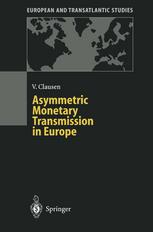

Most ebook files are in PDF format, so you can easily read them using various software such as Foxit Reader or directly on the Google Chrome browser.
Some ebook files are released by publishers in other formats such as .awz, .mobi, .epub, .fb2, etc. You may need to install specific software to read these formats on mobile/PC, such as Calibre.
Please read the tutorial at this link: https://ebookbell.com/faq
We offer FREE conversion to the popular formats you request; however, this may take some time. Therefore, right after payment, please email us, and we will try to provide the service as quickly as possible.
For some exceptional file formats or broken links (if any), please refrain from opening any disputes. Instead, email us first, and we will try to assist within a maximum of 6 hours.
EbookBell Team

0.0
0 reviewsThe euro and the ESCB have started in January 1999 and there is naturally a wide-ranging interest in academia and among policymakers in OECD coun tries, how successful European Monetary Union will and can be. EMU has started with 11 countries and experienced a rapid depreciation of the cur rency. With so many EU countries joining for a historical monetary union in a period of economic globalization, international financial market changes and ongoing EU enlargement the problem of monetary policy efficiency becomes crucial; especially as so many countries in the EU still have high unemploy ment rates and the euro has just started at the beginning of a cyclical upswing in the euro zone. Monetary policy is also quite crucial, because the Maastricht convergence criteria severely restrict the scope of national fiscal policy. With a very limited stock of valuable European monetary experience which could be usefully exploited by the ECB and the ESCB respectively, one naturally will appreciate advanced economic modeling of the main issues. This book takes an analytical look at the problem of asymmetric monetary transmission in Euroland. Facing the ECB's monetary policy, individual mem ber countries are likely to experience different policy effects. Countries differ in their financial structure -a well-known argument in the literature -but also in the characteristics of goods and labor markets. The latter fields have been somewhat neglected in the literature but receive broad analytical attention here.